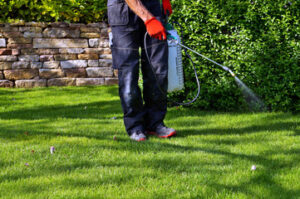Choosing Moving Companies Nampa can make your move a stress-free experience. Ask friends and family for recommendations and review their online reviews. Also, consider the different types of estimates they offer, such as fixed and non-binding estimates.

A reputable moving company offers competitive rates, a high repeat customer rate, and professional standards of service. They can provide additional services such as warehousing and storage.
A good moving company can make the process of moving easier and more efficient. They can help you find the right size truck and trailer for your needs, provide specialized equipment such as dollies and furniture pads to protect your belongings, and offer storage solutions if needed. They can also handle a variety of other tasks, such as packing and unpacking, cleaning up the moving site, and providing transportation to your new home or office.
The cost of a move depends on many factors, including the distance and quantity of items to be moved. Local moves typically cost $800 to $2,500, while long-distance relocations can be more expensive. You can reduce the cost of your move by using a free online calculator and by shopping around for the best deals. You can also negotiate the price with a moving company by asking for a discount on the services you need.
While the services of a moving company are typically more expensive than DIY, they can save you time and stress, especially when handling large or time-sensitive moves. A moving company can also protect your possessions from damage during transport, and can provide a wide range of additional services, such as cleaning and reassembling appliances. Additionally, movers can often handle special requests for items such as antiques or artwork.
A reputable moving company will always give you an accurate quote before beginning work. If you are on a tight budget, it’s important to get several quotes before choosing a company. In addition to comparing prices, you should look at each company’s customer service reputation and reputation in the industry.
You should also consider the extra costs of a move, such as a high-rise building or narrow streets. These obstacles can add up quickly and significantly increase the labor cost. In addition, if you’re relocating to a different city, you may have to pay for extra services, such as storage and shipping.
A professional moving company is an excellent choice for long-distance relocations. They can help you plan a complete relocation and handle all the logistics for you. They can also provide insurance coverage and a dedicated point of contact for any damage claims. In addition, they can provide a wide range of additional services, like furniture disassembly and reassembly, as well as specialized packing materials and storage.
Reputation
If you’re moving to a new home, it’s important to choose a reputable and professional moving company. They can help you move your belongings safely and quickly, while saving you time and money. They also provide other valuable services such as packing, transportation, and storage. They also offer insurance options, which can be helpful in the event that something is damaged during the move.
Before hiring a moving company, make sure to read reviews online and ask friends and family for recommendations. You can also find reviews on third-party websites, but it’s important to focus on those with a high number of verifiable reviews. This will ensure that you’re getting unbiased information from real customers.
You should also check if the moving company has a valid license. A legitimate company will be registered with the Federal Motor Carrier Safety Administration and adhere to the requirements set by the government. You can verify this by searching their Department of Transportation number on the Federal Motor Carrier Safety Administration website.
While all moving companies offer some level of customer satisfaction, some have more satisfied customers than others. You can find out about a company’s reputation by searching their name and location on the Internet, or by asking friends, family, and colleagues for recommendations. Some movers also have their own dedicated web pages, which you can visit to see customer testimonials and other information about the company.
When choosing a moving company, look for a service that matches your needs and budget. Most movers will offer a variety of services, including packing, loading, and unloading. Some will even offer specialized services, such as auto transport and storage. The best movers will have a menu of options that fit your needs, so it’s important to do your research.
A good moving company will have a long list of satisfied customers and a solid track record. They should also be licensed and insured, and their employees must pass background checks. They should have a strong work ethic and a passion for customer service. These qualities will ensure that you have a stress-free move.
Experience
Moving companies offer a full range of services that include comprehensive planning, professional packing services, furniture disassembly and reassembly, transportation, loading and unloading, and storage solutions. These services are critical to a successful move and can help ensure that your possessions arrive in the same condition they left your old home. They also provide access to specialized equipment and transportation options, such as dollies and furniture pads, which are designed specifically for household goods. Moreover, they have experience in relocating delicate or valuable items and can provide specialty handling techniques that help protect them during the transport process.
Providing convenient services, such as decluttering and cleaning, is another key factor that distinguishes moving companies from the competition. This can save customers a lot of time and money, which is especially important when moving to a new city or state. Moreover, it helps customers avoid the stress of having to do the work themselves. In addition, many customers expect their moving company to offer valuation coverage in case of damage or loss. This is a strategic service that helps increase revenue per move and reassures customers of their safety and security during the relocation process.
Customer reviews and recommendations are also influential in the decision-making process when choosing a moving company. People search online for ratings and testimonials to gain insights into the quality of a company’s services. Similarly, they may also ask friends and family for recommendations. In order to build a trusted brand, moving companies should promote these positive reviews on their website and social media channels. They should also implement a process to automatically send review requests after every booked job to encourage customer feedback.
Customers are also concerned about the reliability of a moving company and how they are regulated by local and national authorities. They want to make sure that the company is licensed and insured, which is essential for protecting their belongings. Ideally, they should look for a company with a high BBB rating and excellent track record of resolving customer complaints. They should also check their licensing status with the Department of Transportation for interstate moves and local regulatory bodies for in-state moves.
Insurance
When you move, your belongings are not only at risk from damage but also theft. To protect your items, you must make sure that your moving company is insured. A professional moving company has the resources and experience to offer a variety of insurance benefits. These include general liability, workers’ compensation, and inland marine insurance. Some companies even offer their own valuation coverage, which is similar to lump sum and declared value coverage.
Most moving companies offer at least basic valuation coverage as part of their services. However, this is not really insurance and can only be considered as a bare minimum. The basic plan pays 60 cents per pound for each item damaged or lost. This is not enough to cover most expensive items, such as flat screen TVs. Fortunately, you can upgrade your protection to full value protection (FVP), which costs more but offers more comprehensive coverage than released value.
Some movers may also offer third-party insurance for additional protection. While this is optional and regulated by state law, it can be helpful for homeowners with very valuable possessions. This type of coverage will reimburse you for your losses above and beyond what a moving company’s valuation policy will pay out.
Besides standard moving insurance, many movers also offer specialized types of coverage for high-value items, such as antiques and artwork. These policies may cost more than basic coverage, but they can be worth the extra investment if you are a homeowner with high-value items. In addition, some moving companies can provide a separate high-value inventory form to record and track extremely valuable items.
Insurance is one of the most important aspects of any business, and moving companies are no exception. While a moving company may have a good reputation, they are still exposed to a number of risks, including property damage and personal injury. Having the right insurance can help them minimize these risks and avoid costly lawsuits.
To maximize the income potential of moving insurance, make sure that your team is up-to-date on all the different insurance options available to your customers. Create a clear breakdown of the various options and create automated texts, emails, and task reminders to remind your team to offer insurance. You can also connect your online insurance system to your moving software and earn a set referral fee or percentage when a customer purchases moving insurance through the system.

